Gallery: Medieval Africa's Astounding Riches
The Richest Man in the World
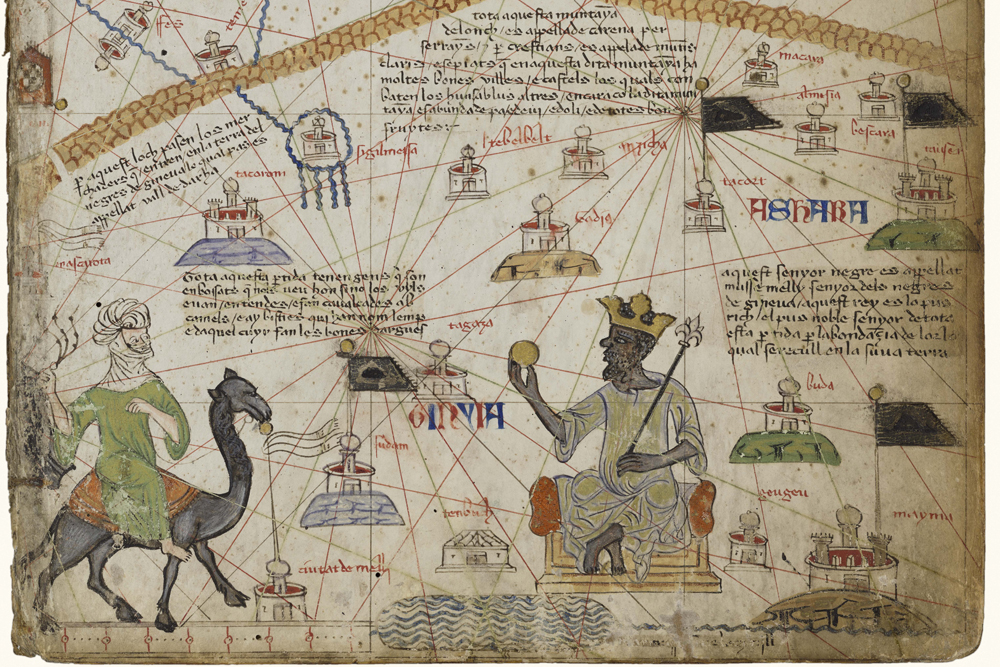
The Catalan Atlas, published in 1375, depicts the richest man of his day: Mansa Musa, the emperor of 14th-century Mali. A reproduction of the Atlas is on display at the Block Museum of Art at Northwestern University in Evanston, Illinois. The Atlas is part of an exhibition at the museum called "Caravan of Gold," highlighting the vast wealth concentrated in Africa in the Medieval period. Musa's lands were the richest gold-producing region in the world at the time, according to the Block Museum, and he's shown in the Atlas admiring a gold coin. [Read more about the medieval map and African art exhibit]
Seated Figure
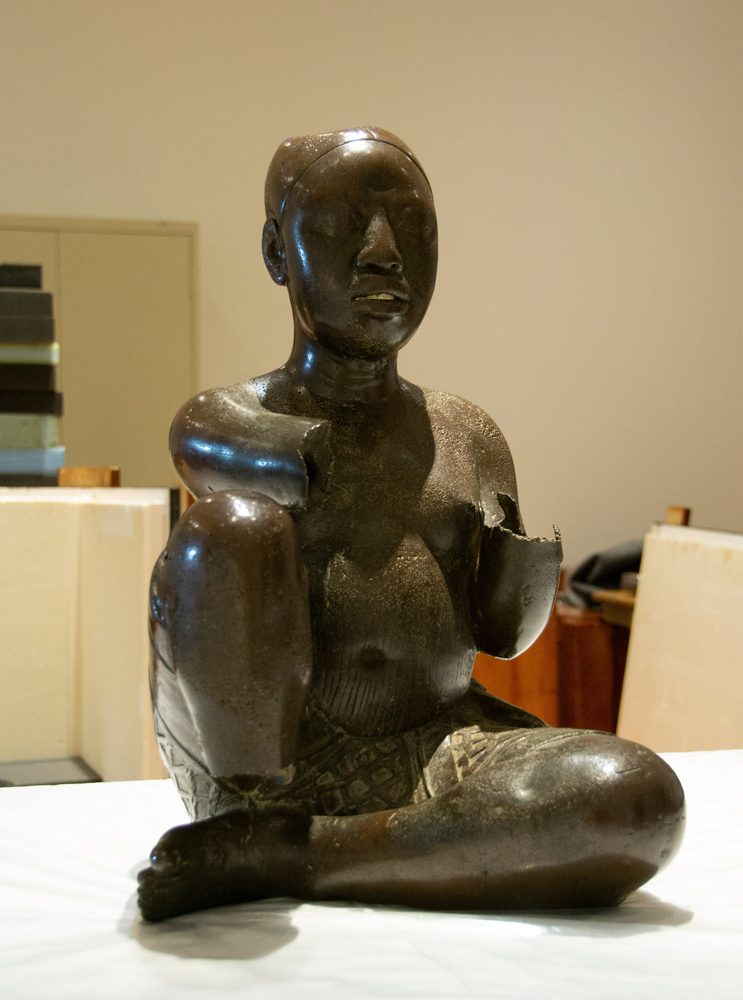
A sculpture of a seated figured from the late 13th or early 14th century in Nigeria. This sculpture likely hails from the ancient city of Ife, the seat of the Yoruba culture. Ife is known for gorgeously sculpted figures and busts made from materials ranging from terracotta to bronze and copper. According to the Block, the copper made to make this sculpture was likely mined in Western Europe, revealing the complex trade routes between the two continents.
Beautiful Bead
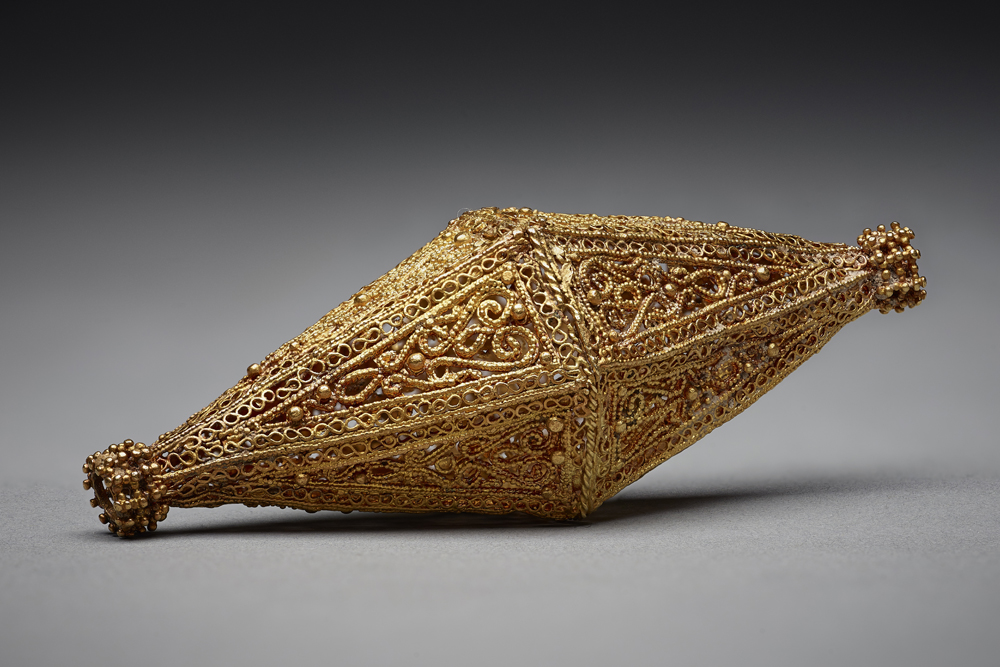
n intricately detailed gold bead, about 2.8 inches (7.2 cm) long. The bead is made from gold wire and comes from the 10th or 11th century from either Egypt or Syria. It was made by artisans of the Fatimid Dynasty, which ruled the region between 909 and 1171 A.D. According to the Aga Khan Museum in Ontario, the Fatimids traded with kingdoms across Africa and around the Indian Ocean and Mediterranean Sea.
Textile Arts
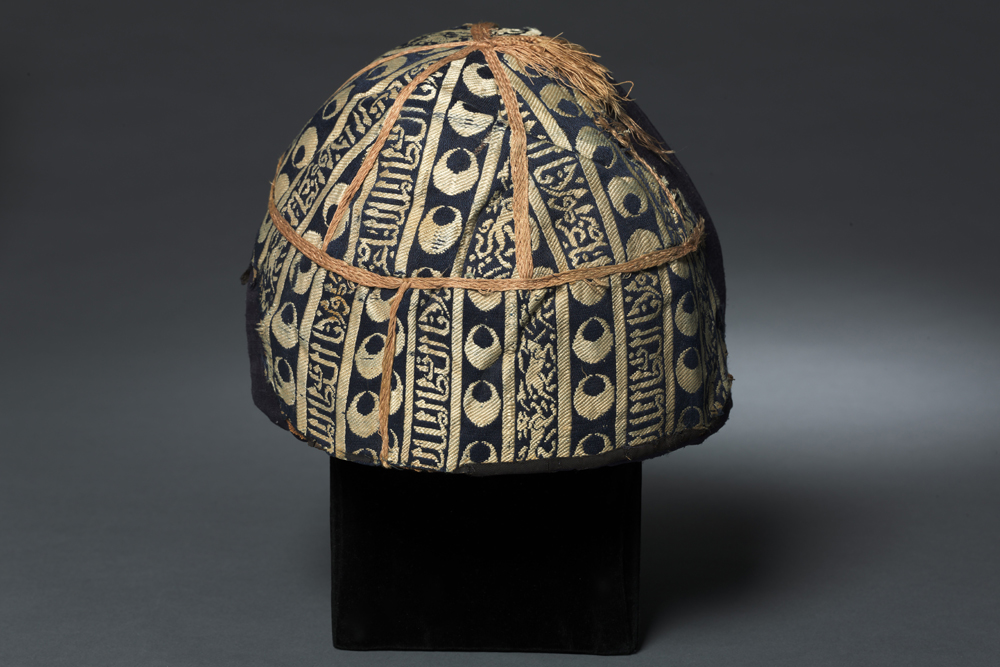
A cap of silk and gold from the 14th century of Egypt or Syria. Animals of the hunt alternate with inscriptions bearing the name of the sultan al-Nasir Muhammed ibn Qala'un. According to the Cleveland Museum of Art, this cap came with a matching quilted vest and may have been a way to indicate rank among high officials in the dynasty.
Tent Poles
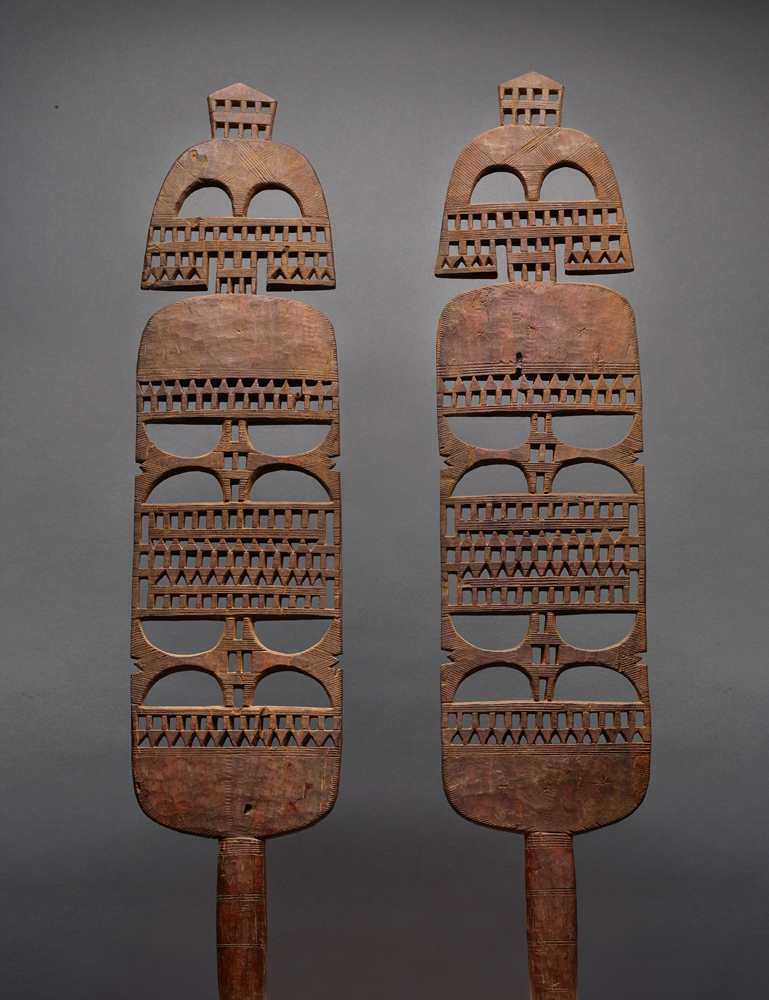
Beauty meets functionality in this set of wooden tent poles held in the collection of The Field Museum and on display at the Block Museum of Art. Nearly 54 inches (136 centimeters) tall, these carved tent poles were made by the Tuareg people of the Sahara region and come from either Mali or Niger.
Virgin and Child
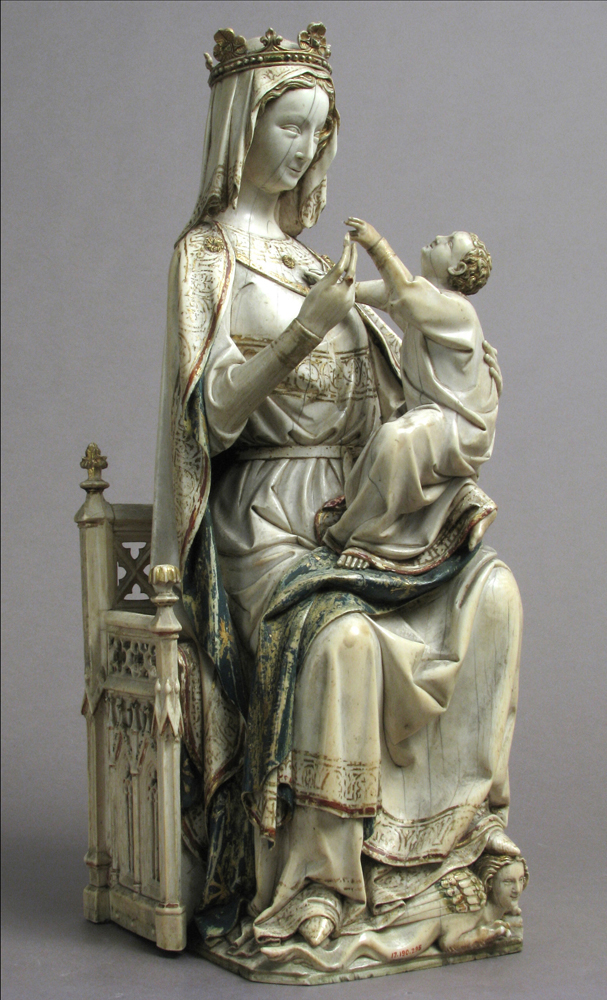
An intricate carving of the Virgin Mary and Christ child from France illustrates the ties between Europe and Africa during the Middle Ages. Carved between 1275 and 1300, this statuette is made of African ivory. It stands about 14.5 inches (36.8 cm) tall. According to the catalogue for the Block Museum's "Caravan of Gold" exhibition, African ivory was particularly prized across the Mediterranean because of the large size of African savanna elephants' tusks.
Elephant Head
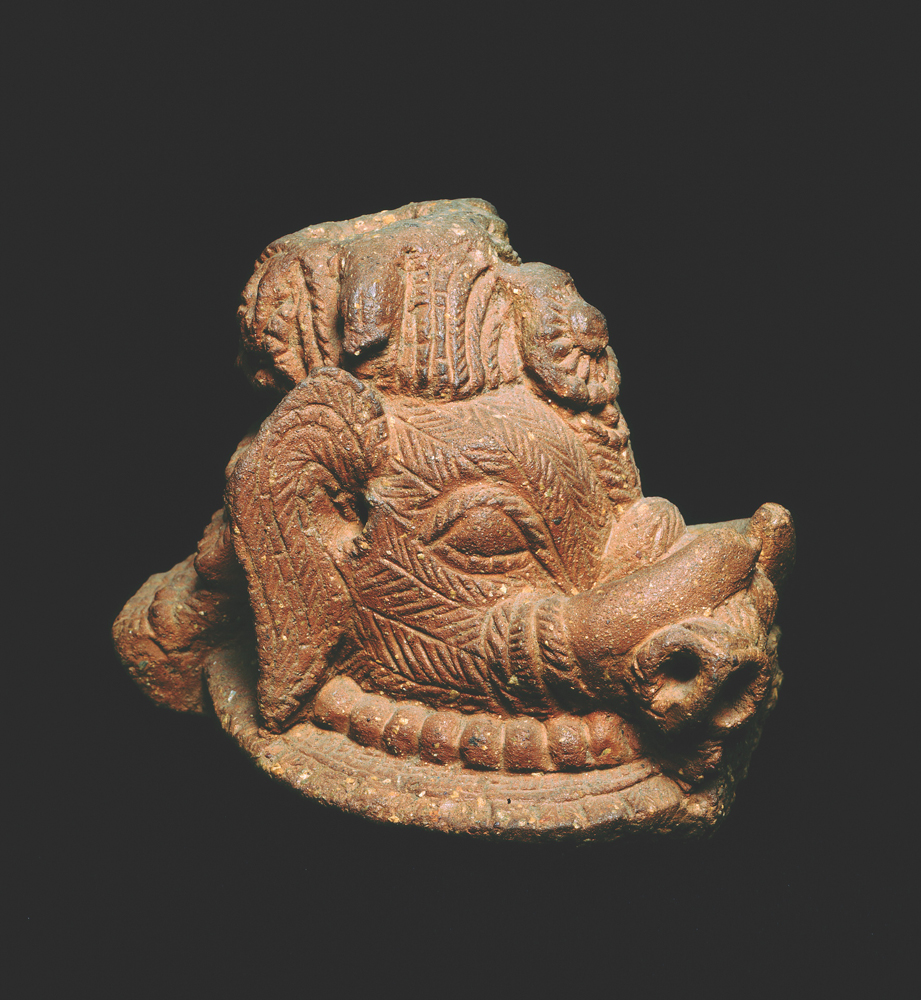
A terracotta elephant head from the ancient city of Ife, made between the 12th and 15th centuries A.D. Just over six inches (15 cm) tall, this elephant head is part of a tradition of elaborate human and animal sculptures made by the Medieval people of Ife.
Kneeling Figure
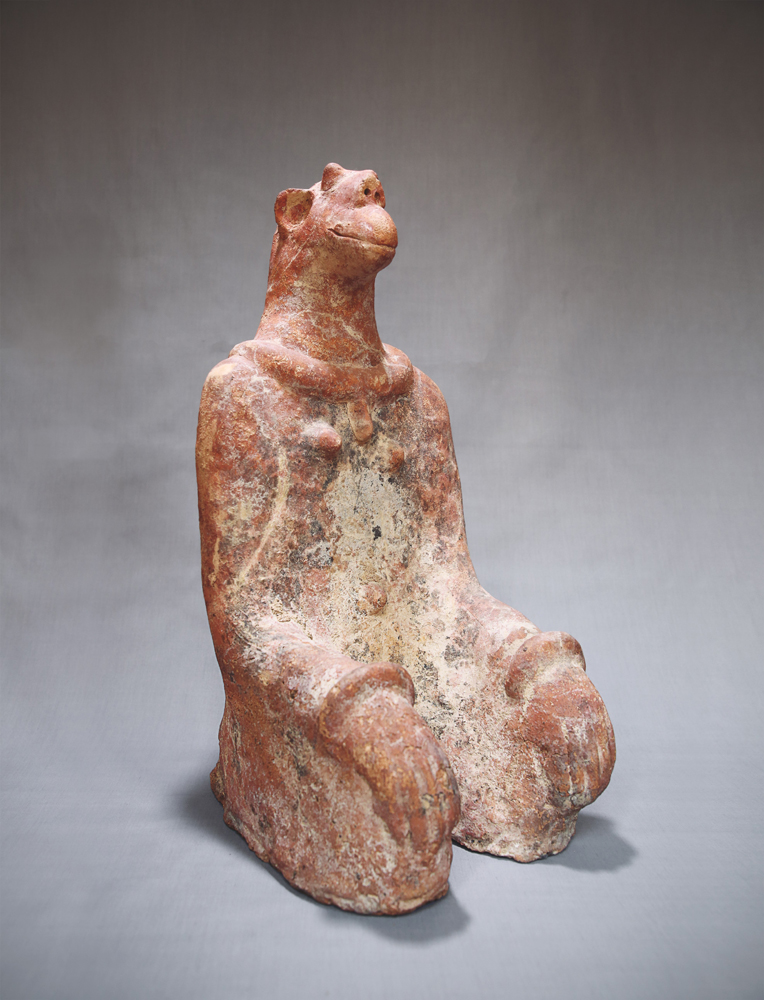
A terracotta figure from the Mopti region of Mali, made between the 12th and 14th centuries. This 10-inch (26 cm) tall figure comes from the archaeological site of Natamatao, which is famous for terracotta figures of animal-like creatures. According to the Block Museum exhibition catalogue, the necklaces and bangles on the fiture indicate high status. The region that is today Mali was situated along trade routes between northern and southern Africa.
Golden Riches
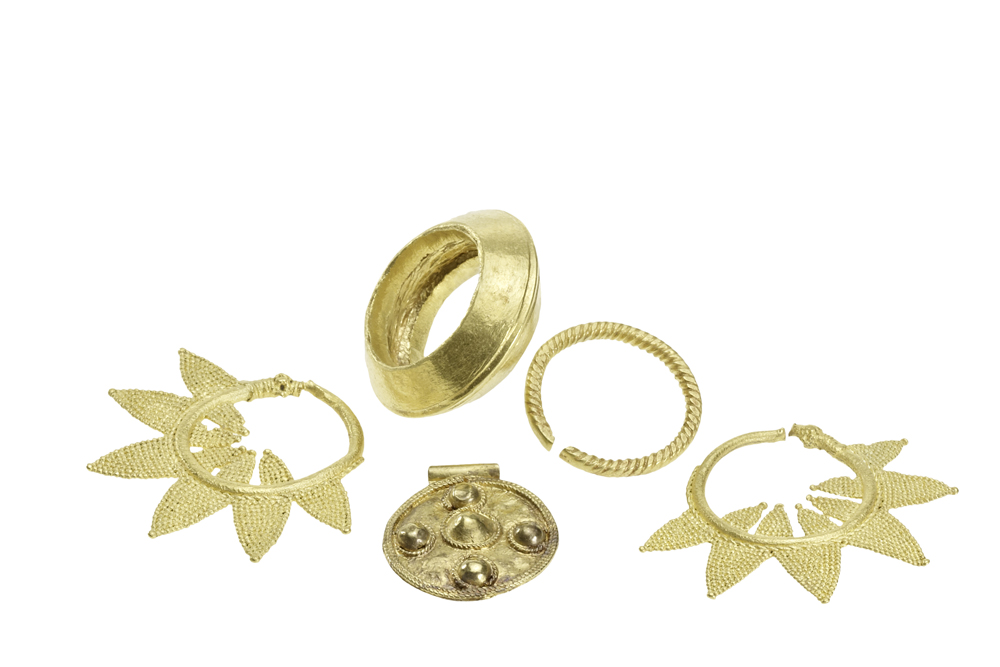
Gold was a major source of Medieval African wealth. The 14th century ruler Mansa Musa presided over land doted with major gold mining operations, which produced the purest, most sought-after gold of his day, said Block Museum exhibit curator Kathleen Bickford Berzock. This gold jewelry was made between the 13th and 15th centuries and was found at the archaeological site Durbi Takusheyi in northern Nigeria.
Archaeology trove
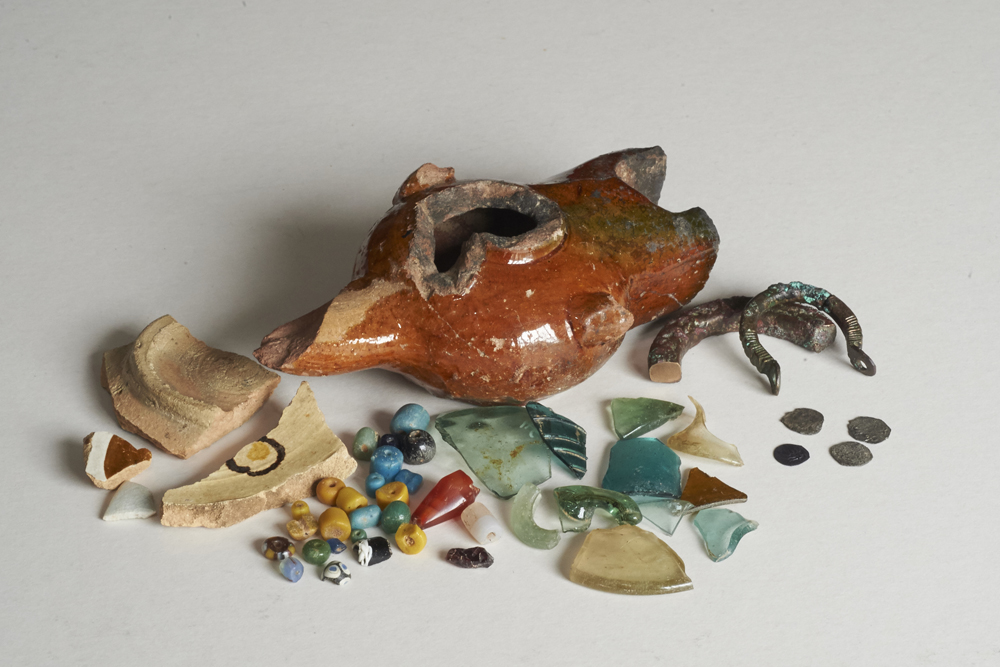
A glazed ceramic oil lamp (center, dark red) and other finds from Essouk-Tadmekka, a prosperous trading town of the Medieval period in what is now Mali. These artifacts include stone beads, silk fragments and glass fragments. Arabic texts of the time referred to Tadmekka as the place where all gold dinars, a coin of the time, were minted. The texts were widely considered to be exaggerations, curator Bickford Berzock said, until archaeologists discovered coin molds with gold flecks still embedded in them at the site. "We've found proof, in fact, that gold was processed and minted south of the Sahara Desert," Bickford Berzock told Live Science.
Trade routes
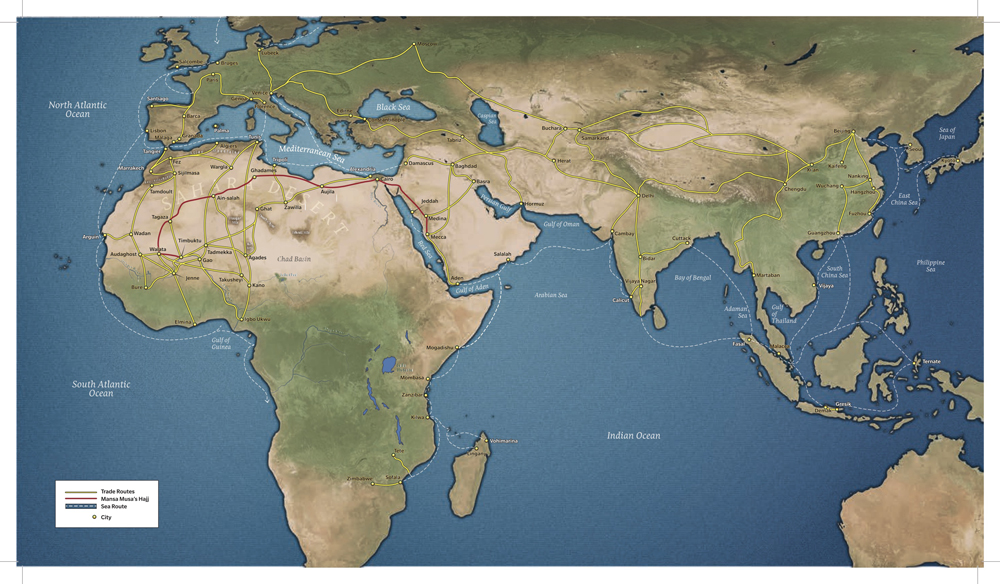
A map showing the trading routes of the Medieval world. Raw materials and finished goods passed back and forth between Africa, Europe, the Middle East and the Far East. Fragments of Chinese porcelain have been found in the Sahara, said curator Bickford Berzock of the Block Museum. European copper was used to make African statues. African ivory was turned into carvings across Europe and the Mediterranean.
"No matter where you sit yourself down, you can look out at this interconnected world and see it from multiple perspectives," Bickford Berzock said.
Sign up for the Live Science daily newsletter now
Get the world’s most fascinating discoveries delivered straight to your inbox.

Stephanie Pappas is a contributing writer for Live Science, covering topics ranging from geoscience to archaeology to the human brain and behavior. She was previously a senior writer for Live Science but is now a freelancer based in Denver, Colorado, and regularly contributes to Scientific American and The Monitor, the monthly magazine of the American Psychological Association. Stephanie received a bachelor's degree in psychology from the University of South Carolina and a graduate certificate in science communication from the University of California, Santa Cruz.










